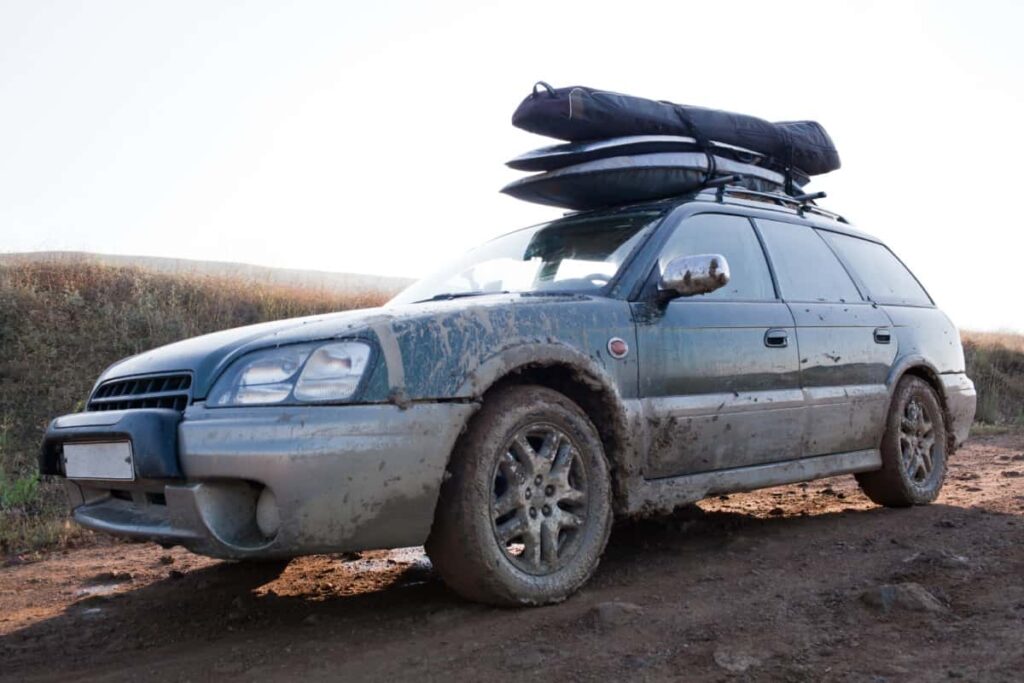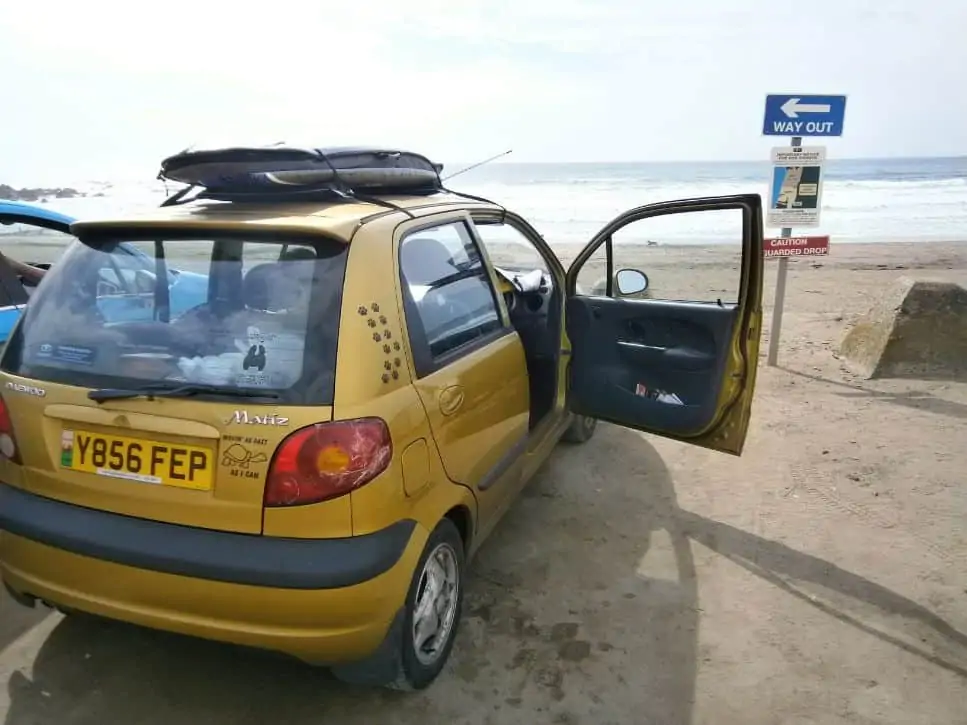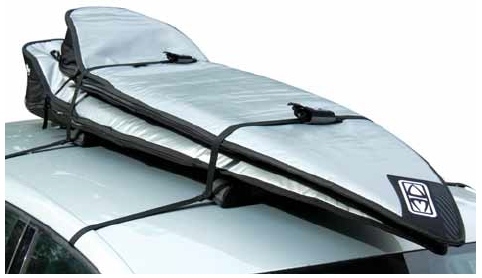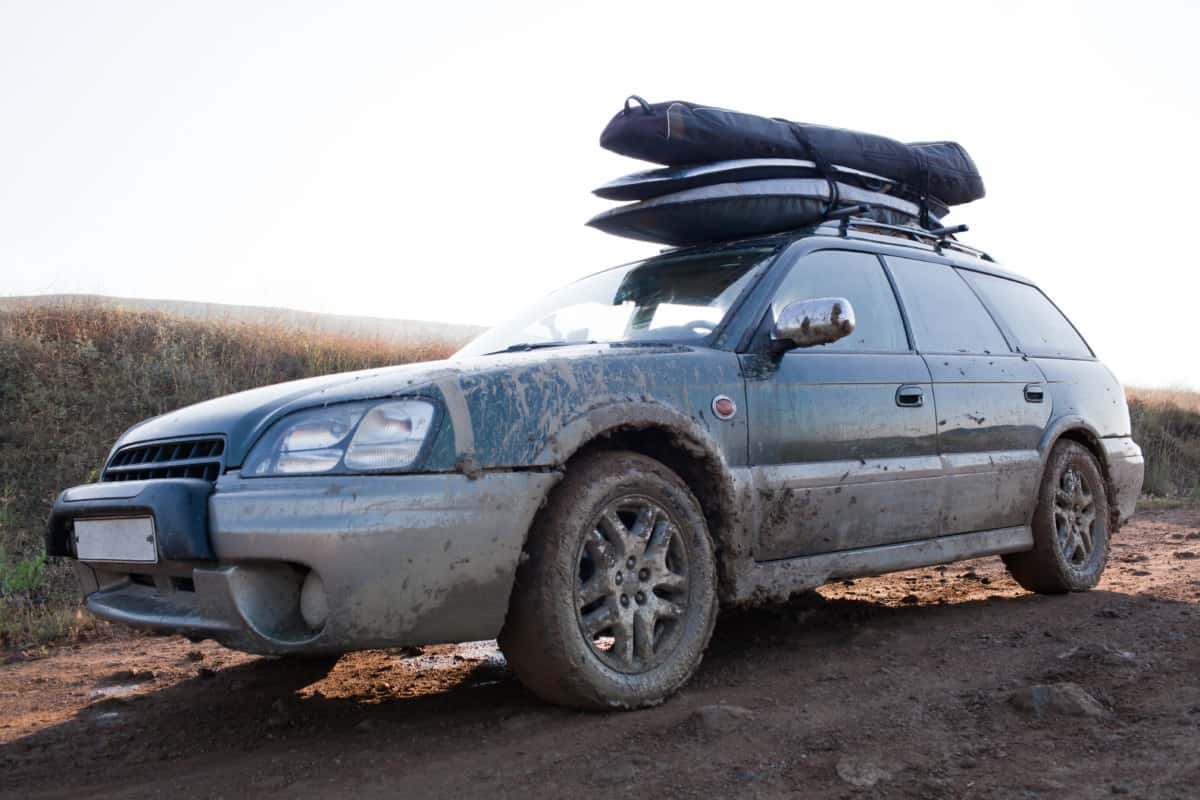Imagine you’re getting ready for an epic beach day with your friends, but there’s just one problem – you need to figure out how to attach your surfboard bag to your roof rack. Fret not, because “The Ultimate Guide: How to Attach a Surfboard Bag to a Roof Rack” is here to save the day! This comprehensive guide will walk you through each step, providing you with valuable tips and tricks to ensure your surfboard stays secure and protected during your journey to the waves. With clear instructions and helpful visuals, becoming a pro at attaching your surfboard bag will be a breeze. Get ready to hit the surf in style with this ultimate guide!
Choosing the Right Surfboard Bag
When it comes to choosing a surfboard bag, size is an important factor to consider. You want to make sure that the bag you choose fits your surfboard snugly. Measure the length, width, and thickness of your board, and find a bag that matches those dimensions. It’s always better to have a bag that is slightly larger than your board rather than one that is too small.
In addition to size, check the material and padding of the surfboard bag. Look for a bag that is made of durable and water-resistant material, such as nylon or polyester. This will help protect your surfboard from scratches and damage during transportation. Additionally, choose a bag with ample padding to provide extra protection for your board. Foam padding is a popular choice as it absorbs impact and prevents dings and dents.
Lastly, consider any additional features that may enhance the functionality of the surfboard bag. Some bags come with pockets or compartments for storing fins, wax, and other accessories. Others have reinforced handles or shoulder straps for ease of carrying. Think about how you like to transport your surfboard and choose a bag that meets your specific needs.
Preparing the Roof Rack
Before attaching your surfboard bag to the roof rack, it’s important to clean and inspect the rack. Remove any dirt, debris, or old wax that may have accumulated on the rack. This will prevent any scratches or damage to your board.
Next, ensure that the roof rack is securely attached to your vehicle. Check all the bolts and fasteners to make sure they are tightened properly. If you notice any loose parts or damaged components, repair or replace them before proceeding.
Adjust the crossbars if needed to accommodate the size of your surfboard bag. The distance between the crossbars should match the width of your bag, allowing for a secure fit. If the crossbars are too far apart, your bag may shift during transit. On the other hand, if they are too close together, it may be difficult to attach the bag securely.

This image is property of zionwaves.com.
Preparing the Surfboard Bag
Before placing your surfboard in the bag, remove any accessories that may be attached to the bag. This includes fins, leashes, and any other items that could potentially get in the way or cause damage to your board during transportation.
Once the bag is free of any accessories, ensure that it is clean and dry. Wipe down the interior and exterior surfaces to remove any sand, saltwater, or other debris that may have accumulated. If necessary, allow the bag to air dry before continuing.
Check all the straps or handles on the bag and make sure they are securely attached. If there are any loose or damaged straps, tighten or replace them accordingly. This will ensure that your bag remains secure during transit.
Positioning the Surfboard Bag
When positioning the surfboard bag on the roof rack, it’s important to align it with the crossbars. This will ensure that the weight of the board is evenly distributed and prevent any unnecessary stress on the bag or the roof rack.
Center the bag on the roof rack to maintain balance. If the bag is off-center, it may affect the aerodynamics of your vehicle and cause instability during the drive. Take your time to position the bag precisely and make any necessary adjustments.
It’s recommended to place the surfboard bag on the roof rack with the fin side forward. This helps reduce wind resistance and minimizes the chances of the fin getting damaged or causing any damage to the bag. Additionally, it allows for easier access when unloading the surfboard.

This image is property of i.ytimg.com.
Attaching the Surfboard Bag
To attach the surfboard bag to the roof rack, use straps or tie-downs. Start by securing the bag to one side of the crossbars. Wrap the strap tightly around the crossbar and feed it through the buckle or fastener. Pull the strap until it is snug, but be careful not to overtighten and damage the bag.
Repeat the process on the other side of the crossbar, making sure the bag is secure and tightly fastened. It’s important to tighten the straps evenly on both sides to maintain balance and prevent any shifting or movement during transit.
If the surfboard bag has multiple straps or tie-down points, use them all for added security. This will further stabilize the bag and minimize the risk of it sliding or coming loose.
Additional Security Measures
While securing the surfboard bag using straps or tie-downs is usually sufficient, you may want to consider using additional straps or ropes as backup. These can act as an extra precaution in case the primary attachment fails or becomes loose during the journey.
Another option to enhance security is to use lockable straps. These straps have built-in locks that prevent tampering or unauthorized access to your surfboard. This can provide peace of mind, especially if you need to leave your board unattended for any period of time.
Lastly, it’s always a good idea to periodically check the security of the attachment during your journey. Pull over at a safe location and inspect the straps or tie-downs for any signs of loosening or damage. It’s better to catch any issues early on and make the necessary adjustments before they potentially lead to a disaster.

This image is property of surflearner.com.
Protecting the Surfboard Bag
To protect your surfboard bag from dust, dirt, and other external elements, cover it with a protective tarp. This will provide an extra layer of defense against insects, bird droppings, and harsh weather conditions.
If you’re concerned about your surfboard shifting or getting damaged during transport, consider using added padding or foam blocks. These can be placed strategically inside the bag to provide extra cushioning and support.
When it comes to extreme weather conditions, it’s important to avoid exposing the surfboard bag to them whenever possible. Excessive heat, cold, or moisture can have detrimental effects on the bag and your surfboard. If you anticipate extreme weather, consider rescheduling your trip or finding an alternative method of transportation.
Testing the Attachment
Before hitting the road, it’s crucial to test the attachment of the surfboard bag. Give it a gentle shake to see if there is any movement or looseness. If the bag shifts or wiggles, it may not be securely attached. In this case, make the necessary adjustments to tighten the straps or tie-downs.
While testing, also check for any unwanted noises or rattling. This could be an indication of loose or poorly secured straps. Address any issues promptly to ensure a safe and smooth journey.

This image is property of speedsurfingblog.com.
Driving Safely with a Surfboard Bag
When driving with a surfboard bag attached to your roof rack, it’s important to prioritize safety. Observe speed limits and adjust your driving according to the road and weather conditions. Sudden turns and excessive speeds can put unnecessary stress on the bag and potentially cause damage to your surfboard.
Keep in mind that the added height and weight of the surfboard bag can affect the aerodynamics of your vehicle. Be aware of increased wind resistance and adjust your driving accordingly. Avoid sudden movements or abrupt lane changes, as this can create instability and compromise the security of the attachment.
During your journey, make it a habit to regularly check the attachment of the surfboard bag. Pull over at safe intervals and inspect the straps or tie-downs for any signs of loosening or damage. It’s better to be proactive and address any issues promptly than to risk your surfboard falling off or causing harm to others on the road.
Unloading and Storing the Surfboard Bag
Once you have reached your destination, carefully remove the straps or tie-downs from the surfboard bag. Take your time to avoid causing any damage to the bag or your surfboard.
When unloading the surfboard, be cautious and gentle. Place it on a clean and soft surface to prevent any scratches or dings. Inspect your surfboard for any signs of damage incurred during transport, and address them accordingly.
After unloading, store the surfboard bag in a clean and dry area. This will help prolong its lifespan and keep it in good condition for future use. Avoid storing the bag in direct sunlight or extreme temperatures, as this can cause the material to deteriorate.
By following these steps and guidelines, you’ll be able to confidently attach a surfboard bag to a roof rack and ensure the safe transportation of your valuable board. Remember to prioritize safety, regularly check the attachment, and take proper care of your surfboard and bag. Now, it’s time to hit the waves and enjoy a great surfing adventure!

This image is property of www.surfholidays.com.

